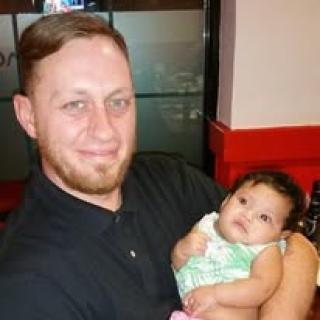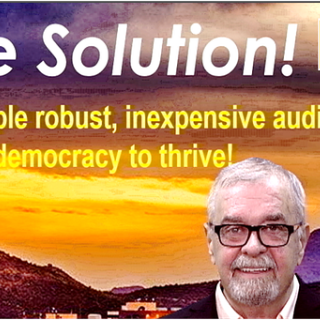Advertisement
But will they?
The website says it all: RadioactiveWasteAlert.org.
The billboard with a young woman guzzling liquid with a radioactive warning on it under the phrase: “Don’t Frack My Water, Protect Columbus” set the stage for one of the most important public forums in the city’s history.
If we had to summarize the major themes that emerged from the Tuesday, November 12 Radioactive Frack Waste Forum, the first is this: the public has a right to know that much of the process allowing radioactive waste into the central Ohio watershed near Alum Creek is the result of hidden, behind-the-scenes maneuvering by Ohio legislators and Governor John Kasich.
Second: the frack waste is undisputedly radioactive and carcinogenic. Radium 226 found at 3000 percent over the allowable limit by the U.S. Environmental Protection Agency (EPA) has a long-established link to many forms of cancer, including breast and bone cancer.
Third: All landfills leak. If you put radioactivity into them, it will come out.
Fourth: Ohio has become a radioactive dumping ground for the fracking industry and is now importing the waste prohibited by the regulators in Pennsylvania and West Virginia.
Of the eight billion gallons of toxic radioactive waste injected into underground wells in Ohio over the last 30 years, half of it came from out-of–state.
Finally: Ohio is now poised to receive 19 million cubic feet of solid radioactive shell rock waste in the near future. Our 39 licensed landfills are de-regulated and open for the toxic imports.
The day before the Forum, “fracktivists” organizers went to Columbus City Council to present their well-documented findings. A few Council members noted that they had read about the radioactivity in the local news where it has been published in both the Free Press and the Columbus Dispatch, as well as reported by the local NBC affiliate, NBC 4 TV.
When Council President Andrew Ginther asked the City’s Public Health Director Theresa Long, she immediately declared, as public health directors have done in the past, that there was no threat to the health of Ohio citizens from a large radioactive waste site sitting right next to Alum Creek. She offered no data or facts with her analysis.
City Attorney Richard Pfeiffer asked the fracktivists the key question after the meeting: “What can the City of Columbus do, considering the current Ohio laws?”
That answer would be provided at the Forum. After an introduction by organizer Carolyn Harding, a series of radioactive waste experts and activists addressed this mounting health crisis. Dr. Julie Weatherington-Rice, an environmental consultant with a doctorate in soil science from the Ohio State University, explained in detail what Long missed.
“They’ve de-regulated the drill cuttings. That’s 90 percent of what comes out of a bore hole. The mud is regulated, yet every piece of cutting is covered in mud and it dries on the rocks. So if the mud is radioactive and it dries on the rocks, it means that the cuttings are of course radioactive,” she pointed out.
Weatherington-Rice said that most of the radioactivity comes from Radium 228 and 226. These are alpha and beta emitters. What the landfills use to detect radioactivity are Geiger counters. These are designed to detect gamma emmissions, an entirely different type of radiation.
Weatherington-Rice noted that the U.S. Department of Energy protocol requires that radium is not to be field tested by a Geiger counter, but isolated in a lab for 21 days to get a proper radioactivity reading.
As she pointed out, amended House Bill 59, Ohio’s 2013 budget bill, has de-regulated “90 percent of the waste stream with no record-keeping requirement because they are calling the material ‘beneficial use.’”
For more than 30 years, Weatheringotn-Rice has been one of Ohio’s leading experts on groundwater protection. Long did not consult her before answering Columbus City Council members.
Terry Lodge, an environmental attorney from Toledo, detailed the backroom dealings that allowed radioactive material to be dumped so close to Columbus’ drinking water. He spoke of new Ohio laws that permit the “downblending” of highly toxic radioactive waste into less toxic material, freeing it from regulation. He also explained how defining drill cuttings as “beneficial use” as liners in landfills it can avoid testing or monitoring.
Lodge ended by saying, “I’m an activist. I’m ready for a fight.” Lodge is famous for using “guerilla” legal and populist strategies to fight frackers and other corporate polluters.
Perhaps the most chilling presentation was given by Dr. Yuri Gorby, a microbial physiologist and ecologist, who holds the Howard N. Blitman Chair of Civil and Environmental Engineering at Rensselaer Polytechnic Institute. He is an expert on the physical health effects of radioactivity and fracking waste.
In his talk, Gorby stated that, in his studies of fracking and radioactivity, he noticed a variety of physical symptoms from bloody noses, burning eyes, rashes and neurological disorders including loss of memory, loss of sense of smell, anxiety and tremors. Gorby said that he has been able to “fingerprint” through DNA many of the rashes directly to fracking. He warned that Ohio’s desire to allow the de-regulation of drill cutting with “no monitoring” will be disastrous for the health of our citizens.
His slide show, which is available at the website mentioned earlier, showed devastating illnesses among people exposed to toxic and radioactive fracking waste.
Nathan Johnson, an environmental attorney at the Forum, quickly answered the question on what the City of Columbus can do.
“They are allowed by law to establish and charge the companies for a program that would monitor for radioactivity in a proper lab test,” he said, “As long as they weren’t selective and charged everyone bringing in drill cuttings.”
On December 3 at 7pm, the group will meet again at the Columbus Public Library on Grant Street (Main Library).




